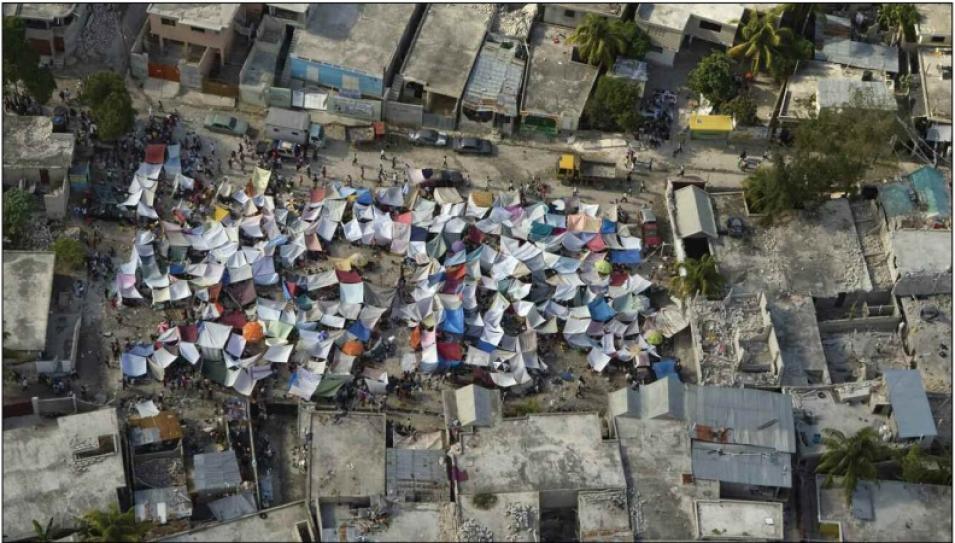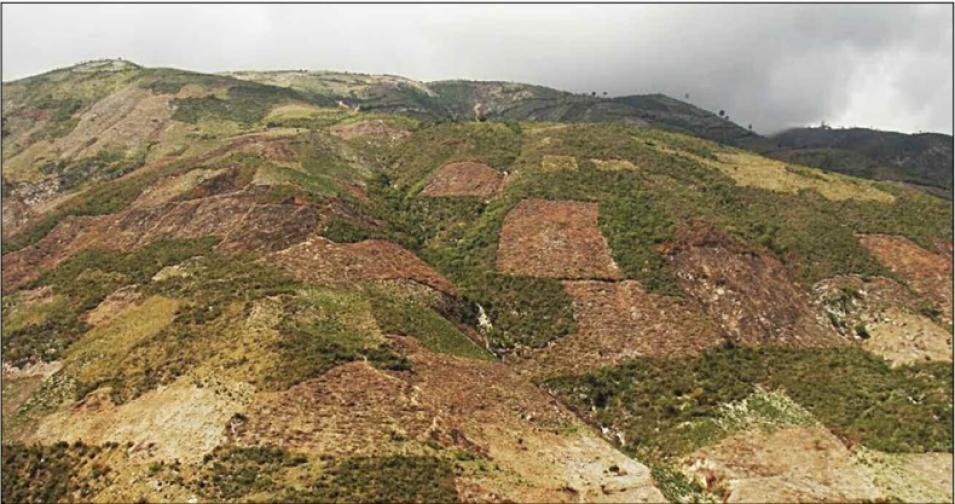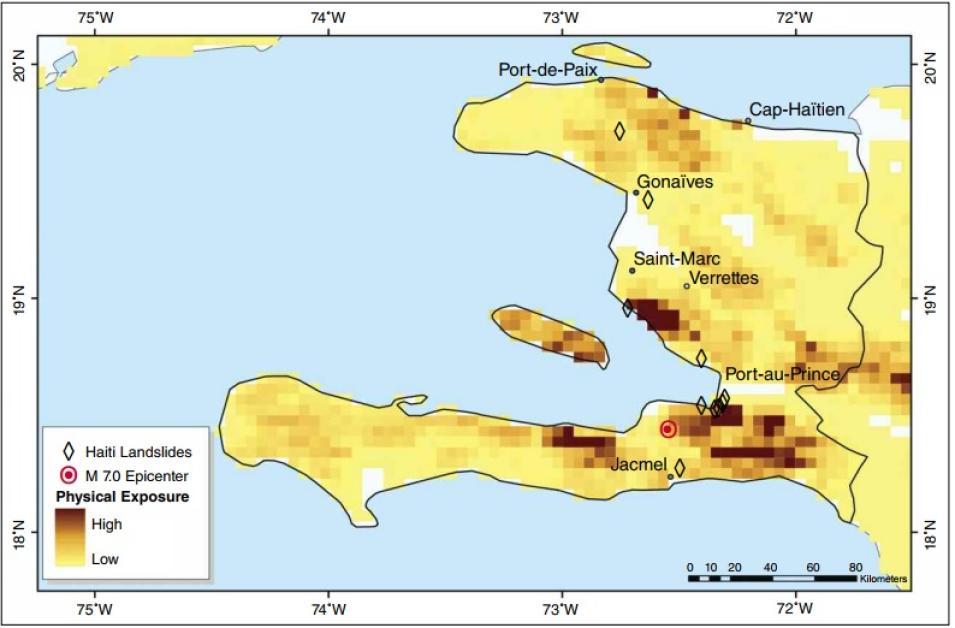In the months following the earthquake, Kirschbaum worked on a series of maps to identify where people in Haiti are most vulnerable to landslides. Landslides are notoriously difficult to predict, particularly using broad-scale satellite data. “You are looking at a very small-scale feature that is barely resolvable in satellite imagery. You’re not looking at a hurricane where it’s hundreds of kilometers across and you can track it with satellite images,” Kirschbaum said. But in Haiti, where there is little ground data on soil moisture or rainfall, satellite data may be the best tool.
Kirschbaum combines satellite data on rainfall with maps of land cover type and gridded population data from NASA's Socioeconomic Data and Applications Center (SEDAC). Kirschbaum said, “The approach we’re taking is statistical and empirical. We look at satellite data to hypothesize the conditions in which landslides might be triggered. Then we look at where the people are. Where these two data sets intersect is where the populations will be most susceptible to landslides.”
Knowing where people are concentrated is key, and means knowing where a landslide could have the largest impact. But human presence can also affect the stability of slopes. Kirschbaum said, “There’s a feedback mechanism: people tend to cause more landslides because of their activities.” On steep slopes the construction of roads and buildings can weaken an already precarious hillside, particularly if the structures are not built according to engineering standards. And extreme deforestation in the Haitian countryside has made the whole country more vulnerable to landslides, since there are fewer roots to protect the slope and absorb water during a major rainfall.
Human dimensions of disaster
Fischer and other researchers are now focusing on the links between people, their environments, and the impact of natural disasters in Haiti. Fischer said, “Haiti is even more vulnerable to disasters because they have poor construction standards, because they don’t have proper communication systems, and they don’t have proper shelters to evacuate to.”
Inadequate construction standards make buildings more likely to collapse when hit by strong winds or flooding. Lack of an emergency warning system or adequate public shelters means that people have little warning of a storm and nowhere to go when it strikes. Those problems not only have the potential to increase the impact of disasters; they also confound the effort to rebuild and prepare for future disasters.
Kirschbaum said. “What’s sorely needed in Haiti is not just hazard assessment, but a focus on the social dimension. How can we take the data we have and move it into action?”
The earthquake also refocused researchers like Fischer. “The earthquake was unexpected. Nobody was talking about earthquake risk in Haiti prior to January 2010,” Fischer said. “So it completely changed our perspective on disaster risk and what was needed for preparation.” Now, on top of hurricanes and floods, the researchers have to consider collapsed buildings, destroyed roads and communications, extensive debris blocking river channels and flood plains, and other problems that occur after an earthquake, such as landslides triggered by rainfall. They also think about how a slow recovery from the earthquake could affect response to future disasters. Fischer said, “The earthquake delayed our initial work, but it also broadened our focus into a national and regional scale, and made us think about how we could scale up local programs into broader risk management.”
References
Hong, Y., R. Adler, and G. Huffman. 2007. Use of satellite remote sensing in the mapping of global landslide susceptibility. Natural Hazards, doi:10.1007/s11069-006-9104-z.
Kirschbaum, D.B., R. Adler, Y. Hong, and A. Lerner-Lam. 2009. Evaluation of a preliminary satellite-based landslide hazard algorithm using global landslide inventories. Natural Hazards and Earth System Sciences 9:673-686.
Smucker, G.R. (ed.), M. Bannister, H. D'Agnes, Y. Gossin, M. Portnoff, J. Timyan, S. Tobias, and R. Toussaint. 2007. Environmental Vulnerability in Haiti: Findings and Recommendations. United States Agency for International Development.
For more information
NASA Socioeconomic Data and Applications Center (SEDAC)
Center for International Earth Science Information Network (CIESIN)
CIESIN Haiti Regeneration Initiative
Haiti Regeneration Initiative
| About the remote sensing data |
| Data set used |
Gridded Population of the World |
| Spatial resolution |
2.5 minutes, latitude/longitude |
| Temporal resolution |
1990-2015, every five years |
| Parameter |
Human population density |
| DAAC |
NASA Socioeconomic Data and Applications Center (SEDAC) |


